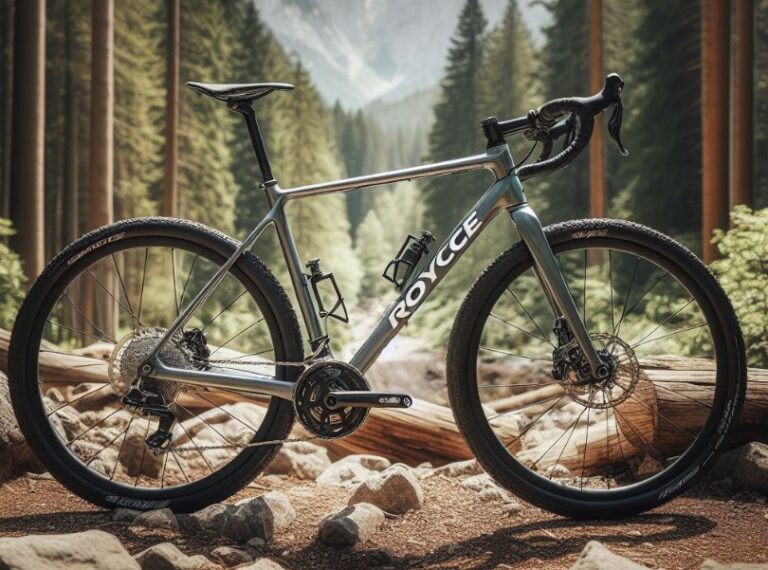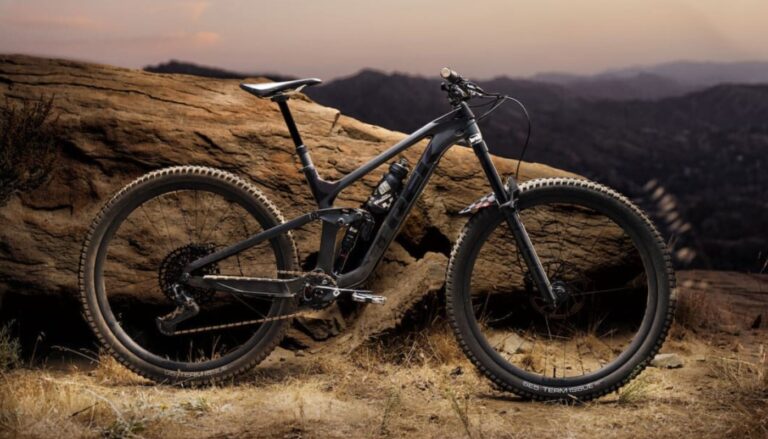Do Dirt Bikes Have Oil Filters? All You Need To Know
Dirt bikes, designed for rugged terrains and challenging trails, raise questions about their internal mechanisms, particularly regarding oil filtration. The inquiry, Do Dirt Bikes Have Oil Filters? taps into the core of maintenance practices essential for the longevity and performance of these adventurous machines. As enthusiasts dive into this topic, they uncover the diversity in design and functionality across different models and makes.
Key Takeaways
- Dirt bikes may or may not have oil filters, depending on their make and model.
- Oil filters play a critical role in maintaining engine health by removing contaminants.
- Regularly checking and replacing the oil filter, if present, is essential for optimal dirt bike performance.
Do Dirt Bikes Have Oil Filters?
Yes, many dirt bikes do have oil filters. However, whether a specific dirt bike has an oil filter depends on its make, model, and year. Modern high-performance dirt bikes typically feature oil filters to protect the engine from contaminants, while some older or basic models may not.
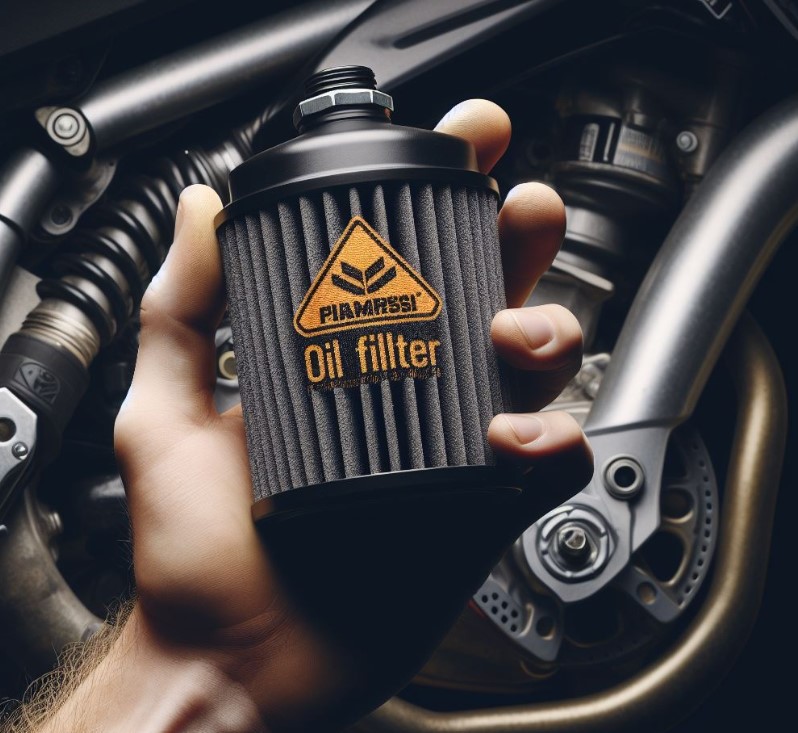
Understanding the Lubrication System in Dirt Bikes
The Role of Oil Filters
Oil filters in dirt bikes serve a fundamental purpose: they cleanse the oil of particles and impurities that accumulate over time. These filters are the first line of defense for the engine, protecting it from potential damage caused by the circulation of contaminated oil.
Not all dirt bikes are equipped with oil filters; however, those that do benefit from an added layer of protection, contributing to a longer engine life and more reliable performance.
Variations Across Models
The existence and type of oil filter can vary significantly across different dirt bike models. While some modern high-performance dirt bikes are equipped with sophisticated oil filtration systems, older or more basic models might lack this feature.
This variation underscores the importance of familiarizing oneself with the specific maintenance requirements of their dirt bike, including understanding whether an oil filter is part of its lubrication system.
The Importance of Oil Filters in Engine Maintenance
Enhancing Engine Life
The presence of an oil filter in a dirt bike’s engine significantly contributes to its longevity. By removing harmful particles from the oil, the filter prevents abrasive wear on internal engine components, such as the pistons and crankshaft.
This not only extends the engine’s lifespan but also maintains its performance level, ensuring that the bike remains a reliable companion on rugged trails.
Maintenance and Replacement
Regular maintenance of the oil filter is crucial for its effectiveness. Riders should adhere to the manufacturer’s recommendations for checking and replacing the oil filter to ensure optimal engine health.
Neglecting this aspect of maintenance can lead to reduced engine efficiency and, ultimately, engine failure. Therefore, understanding the specific needs of your dirt bike’s lubrication system is key to keeping it running smoothly.
Types of Oil Filters for Dirt Bikes
Cartridge vs. Spin-On Filters
Dirt bikes typically use one of two types of oil filters: cartridge or spin-on. Cartridge filters are housed within a reusable cover and can be replaced without changing the entire unit.
Spin-on filters, on the other hand, are self-contained units that are replaced as a whole. Each type has its benefits, and the choice between them often depends on the bike’s design and the rider’s preference.
Choosing the Right Oil Filter
Selecting the appropriate oil filter for a dirt bike involves considering various factors, including the bike’s model, the riding conditions, and the type of oil used.
High-quality filters that can effectively remove small particles without restricting oil flow are essential for maintaining engine health. Riders should consult their bike’s manual or a professional mechanic to ensure they choose the best filter for their needs.
Do All Dirt Bikes Have Oil Filters?
Not all dirt bikes come equipped with oil filters. The presence of an oil filter largely depends on the make, model, and design of the dirt bike. Many modern dirt bikes, especially those designed for high performance and endurance, incorporate oil filters to safeguard the engine from contaminants that can degrade its oil.
These filters play a crucial role in maintaining engine health by trapping dirt, debris, and metal particles, thus preventing them from circulating within the engine.
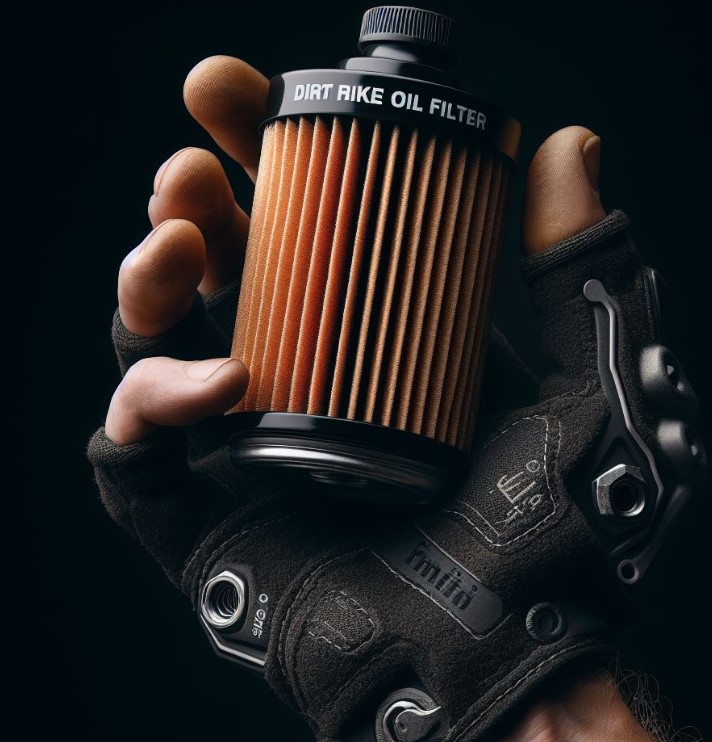
On the other hand, some older models or lower-end dirt bikes might not have an oil filter. Instead, these bikes rely on regular oil changes to minimize the accumulation of contaminants within the engine.
The variation underscores the diversity in dirt bike designs and the emphasis on maintenance practices suited to each model’s specific needs.
How To Replace A Dirt Bike Oil Filter?
Replacing an oil filter on a dirt bike is a straightforward maintenance task that is essential for keeping the engine running smoothly. Here are the general steps involved, although specifics can vary by model:
- Prepare your bike: Ensure the bike is stable and cool. Place an oil catch pan underneath the engine.
- Drain the oil: Remove the oil drain plug and let the old oil flow out completely. Replace the drain plug once the oil has drained.
- Access the oil filter: Locate the oil filter cover on the side of the engine. Remove the bolts or screws securing the cover.
- Remove the old oil filter: Take out the old filter. Note the orientation and any O-rings or seals that need to be replaced.
- Install the new oil filter: Clean the filter housing and insert the new filter in the correct orientation. Replace any O-rings or seals as necessary.
- Reassemble: Replace the cover and secure it with the bolts or screws. Ensure everything is tight and correctly positioned.
- Refill with oil: Fill the engine with the recommended type and amount of oil.
- Check for leaks: Start the bike and let it run for a few minutes. Check for any signs of oil leakage around the filter cover and drain plug.
Always refer to your dirt bike’s manual for model-specific instructions and recommendations.
How Do You Remove The Oil Filter On A Dirt Bike?
Removing the oil filter from a dirt bike involves several key steps, tailored to ensure that the process is done cleanly and efficiently to maintain engine health:
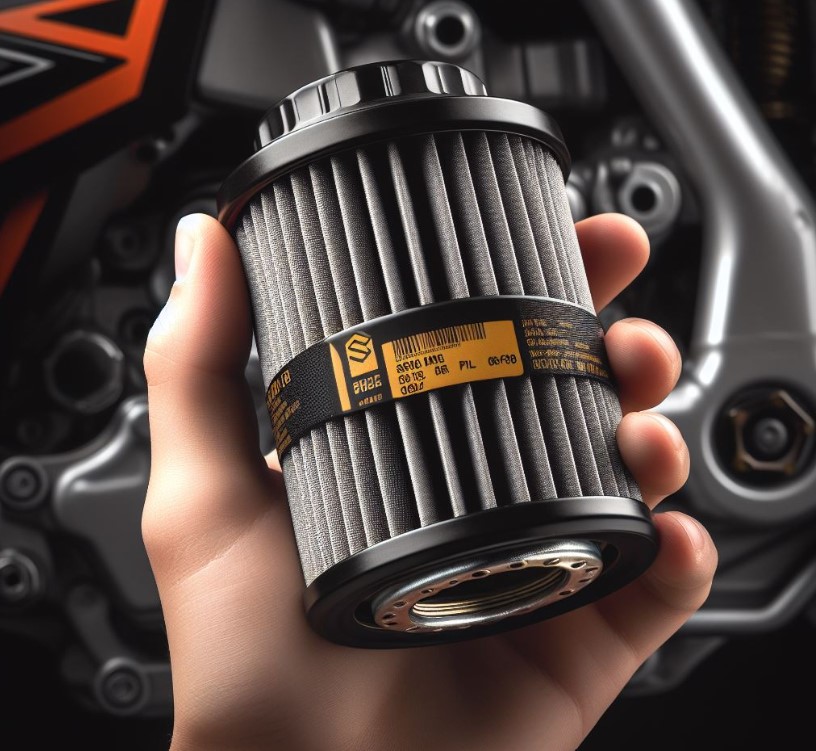
- Drain the engine oil: Before accessing the oil filter, ensure that the engine’s oil is fully drained to prevent spillage. This usually requires removing the oil drain plug and allowing the oil to empty into a catch pan.
- Access the filter compartment: Locate the oil filter compartment, which is typically covered by a cap or plate on the engine’s side. Unscrew the bolts or fasteners holding the cover in place.
- Remove the oil filter: Once the cover is off, you should see the oil filter. It might be snug, so gently pull or twist it out, depending on the model. Some bikes have a small metal clip or a retainer that must be carefully removed before extracting the filter.
- Prepare for the new filter: Before installing a new filter, clean the filter compartment and surrounding area to ensure no debris enters the engine.
Remember, the exact method may vary based on your dirt bike’s design, so consulting the specific model’s manual is always recommended for precise instructions.
How Often Do You Change The Oil Filter On A Dirt Bike?
The frequency of oil filter changes in a dirt bike can significantly influence engine performance and longevity. Generally, it’s recommended to change the oil filter every time you change the oil to ensure the engine remains free of contaminants.
For most riders, this translates to every 15 to 20 hours of riding time if the bike is used in normal conditions. However, for those riding in more demanding or dirty environments, changing the oil and filter more frequently may be necessary to protect the engine from excessive wear.
Moreover, adhering to the manufacturer’s guidelines provided in the bike’s manual is crucial as these recommendations are tailored to the specific needs of the engine.
Some manufacturers might suggest different intervals based on the use case of the bike, such as competitive racing versus casual riding, which can have a significant impact on how quickly oil contaminants build up.
Conclusion
In summary, the presence of oil filters in dirt bikes varies, reflecting the broad spectrum of designs and requirements of these vehicles. Understanding whether your dirt bike has an oil filter is crucial for maintaining optimal engine health and ensuring your machine remains a reliable companion on your off-road adventures. Regular maintenance, including oil and filter changes, is essential for all dirt bikes, irrespective of their specific configurations.
Top FAQ’s
What are the signs of a clogged oil filter on a dirt bike?
Signs of a clogged oil filter include reduced engine performance, increased oil consumption, and unusual engine noises. If the filter is severely clogged, you may also notice the oil pressure warning light illuminating, indicating restricted oil flow to the engine.
Are aftermarket oil filters a good choice for dirt bikes?
Aftermarket oil filters can be a good choice for dirt bikes, provided they meet or exceed the manufacturer’s specifications. Some aftermarket filters offer superior filtration and flow rates. However, it’s essential to research and select a reputable brand to ensure the filter offers the protection and performance your dirt bike requires.
Can the type of oil filter affect my dirt bike’s performance?
Yes, the type of oil filter can affect your dirt bike’s performance. A high-quality oil filter will ensure optimal flow and filtration, keeping the engine clean and running smoothly. Conversely, a low-quality filter may not effectively remove contaminants, leading to reduced engine efficiency and performance.
How do I choose the right oil filter for my dirt bike?
Choosing the right oil filter involves considering the bike’s model, engine size, and specific requirements. Always refer to the bike’s manual for manufacturer recommendations. Opt for high-quality filters designed for your bike’s specific model to ensure compatibility and effective filtration.

Welcome to the exhilarating world of Matt Rex, a professional car racer turned renowned vehicle enthusiast. Immerse yourself in his captivating blog as he shares heart-pounding adventures, expert reviews, and valuable insights on cars, trucks, jets, and more. Fuel your passion for speed and discover the beauty of vehicles through Matt’s engaging stories and meticulous expertise. Join the ever-growing community of enthusiasts who find inspiration and expert advice in Matt Rex’s blog—a digital hub where the thrill of speed meets the pursuit of knowledge.



